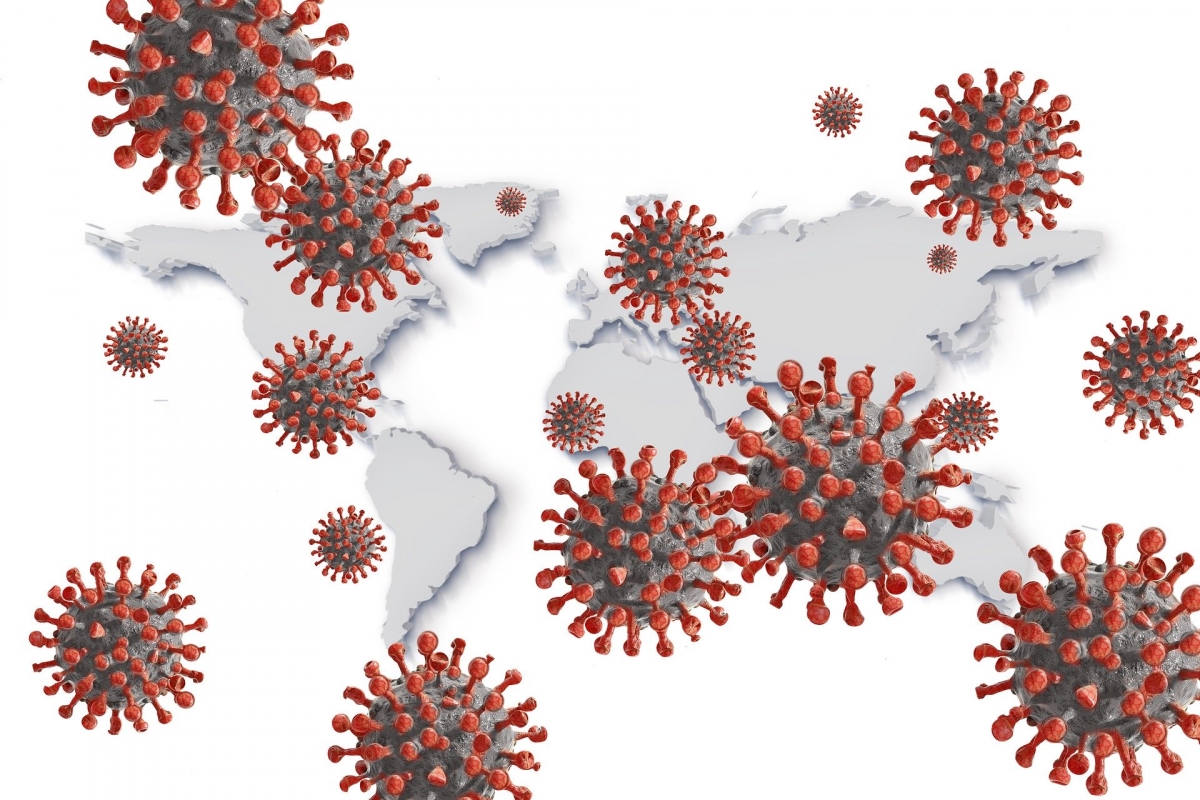Black people are bearing the brunt of COVID-19’s impact. Cities such as the District of Columbia, Milwaukee, and St. Louis and states such as Illinois, Louisiana, Michigan, and Mississippi have released data demonstrating that Black people make up a disproportionate number of COVID-19-related deaths. These deaths are due in no small part to centuries of structural inequality that limit access to what public health experts call the social determinants of health.
The Centers for Disease Control and Prevention define the social determinants of health as the conditions in which we live, learn, work, and play that affect health outcomes. These conditions include access to clean air and water, which research has demonstrated is closely linked to race and income. Many of these social determinants such as densely populated housing, access to health care, and reliance on public transportation influence vulnerability in the black community. However, a recent study also cites an additional factor: long-term exposure to air pollution.
 The study published by the Harvard T.H. Chan School of Public Health found that an increase in long-term exposure to air pollution increases COVID-19 mortality. Researchers assessed exposure to particulate matter smaller than 2.5 microns (also known as PM2.5). PM2.5 is a particularly notorious pollutant linked to aggravated asthma, decreased lung function, and respiratory symptoms. These are the same respiratory diseases that are classified as pre-existing conditions that can lead to fatal COVID-19 outcomes. Harvard researchers found that a 1 μg/m3 (milligram per cubic meter) increase in long-term exposure to PM2.5 increases COVID-19 mortality by 15%.
The study published by the Harvard T.H. Chan School of Public Health found that an increase in long-term exposure to air pollution increases COVID-19 mortality. Researchers assessed exposure to particulate matter smaller than 2.5 microns (also known as PM2.5). PM2.5 is a particularly notorious pollutant linked to aggravated asthma, decreased lung function, and respiratory symptoms. These are the same respiratory diseases that are classified as pre-existing conditions that can lead to fatal COVID-19 outcomes. Harvard researchers found that a 1 μg/m3 (milligram per cubic meter) increase in long-term exposure to PM2.5 increases COVID-19 mortality by 15%.
The Harvard study adds to the evidence showing a concerning connection between environmental governance and racism. Even when accounting for education and income levels, Black communities are more likely to be exposed to PM2.5 due to their proximity to industrial zones, power plants, and high traffic areas such as highways. While our environmental laws have successfully reduced PM2.5 across the country, high levels of pollution persist, often concentrated in areas that are inhabited by communities of color. On top of this existing burden, federal rollbacks that effect pollution control enforcement, both preceding and during the current pandemic, could contribute to an increase in pollution. Environmentalists and human rights advocates alike decry the current reduction of pollution control enforcement measures during and due to a virus exacerbated by air pollution as “irrational and irresponsible” and “staggeringly regressive.”
Black people are not the only group that has been threatened by Covid-19. Native Americans, and the Latinx community are also at increased risk for Covid-19. While Black communities are disproportionately impacted statewide, the Latinx community in New York City is the most impacted racial demographic. In future blog posts, we hope to discuss the relationship between Covid-19, environmental governance, and other vulnerable communities both domestically and abroad.
Air pollution is just one potential contributor to COVID-19 mortality. But the connection between disproportionate exposure to air pollution and disproportionate mortality in Black communities suggests that our environmental governance systems are not equitably protecting the health of all. In fact, these systems may be playing a lethal role in upholding structural inequality.
During a recent Environmental Law Institute (ELI) and American University Washington College of Law Program on Environmental and Energy Law webinar entitled Community Lawyering for Environmental and Climate Justice, panelists explained that COVID-19’s disproportionate impact on vulnerable communities and its link to air pollution is invigorating a needed conversation on reimagining environmental law to protect the most vulnerable members of our society. Fortunately, proposals to strengthen environmental governance to do so have been implemented at the state level and proposed at the federal level. However, environmental justice experts argue that we are in need of a paradigm shift that ensures communities of color and other impacted communities have early and consistent access to environmental decisionmaking and will receive responses to concerns around environmental health.
As panelists further highlighted, we now have an opportunity to identify the “new normal” in the wake of this pandemic. What we will contribute and whether this new normal will help or harm vulnerable communities is a direct result of the conversations we hold and the efforts we make today.
You can watch a recording of Community Lawyering for Environmental and Climate Justice here.
If you are interested in learning more about Environmental Justice more broadly, here is a reading list compiled by panelists and attendees of the Community Lawyering for Environmental and Climate Justice webinar held on April 17.
Author’s Note: It took several attempts to begin writing this blog post. Wading into the statistics around death and racism is horrifically depersonalizing and does not reflect the trauma of losing family, neighbors, and friends. While this post aims to highlight systemic issues around public health, environmental governance, and inequality, I hope that readers will also take the time to acknowledge and empathize with the profound personal impacts of what are quoted here as statistics. Stay safe and healthy.
